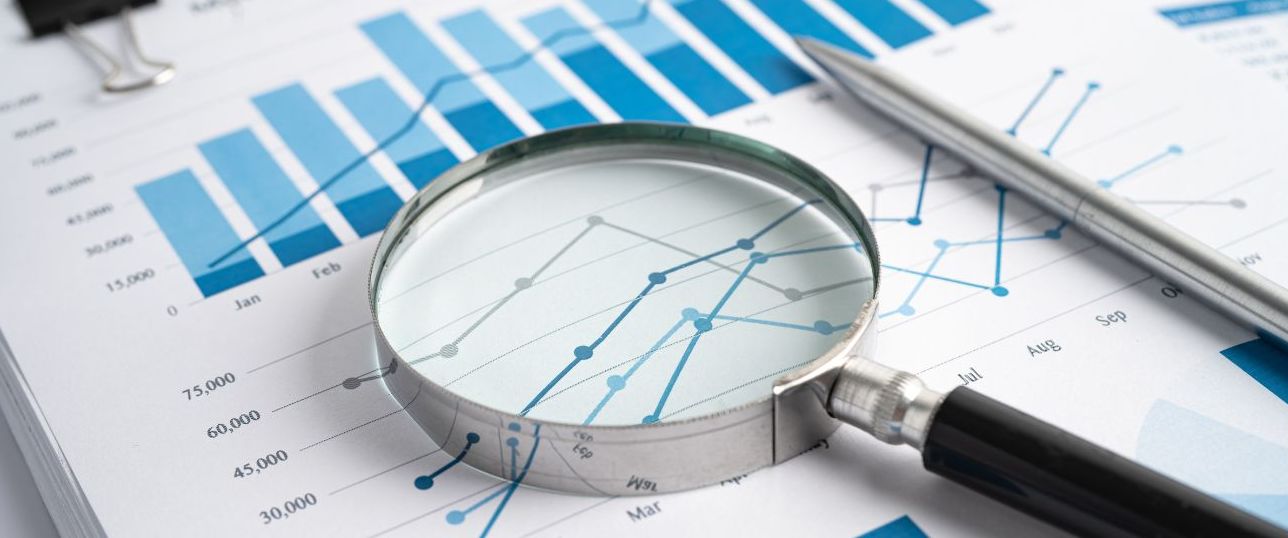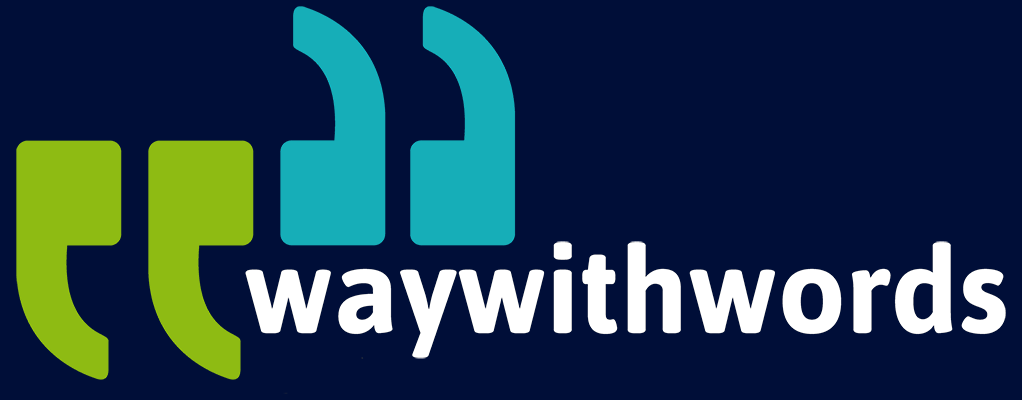Why Market Researchers Depend on Transcription for Insights
Why do Market Researchers Depend on Transcription for Insights?
In market research, attention to detail isn’t optional—it’s essential. Whether exploring consumer sentiments, testing early-stage concepts, or dissecting the reasons behind market shifts, researchers rely on clarity to make sound decisions. Among the many tools that make this possible, transcription stands out as a powerful yet often underutilised asset.
Think about the sheer volume of audio collected in a typical project: stakeholder interviews, consumer focus groups, team ideation sessions, feedback calls, and open-ended survey responses. Without transcription, much of this content risks becoming inaccessible. Transcription turns fleeting conversations into lasting, searchable data.
This is not just about producing a written record, such as with law firms that reply on transcription for case documentation. Market research transcription enables systematic analysis. It transforms talk into text that can be coded, tagged, quoted, compared, and validated. In doing so, it bridges the gap between anecdotal input and evidence-based conclusions.
Many insight teams ask the same core questions:
- How can I ensure no insights are lost during qualitative sessions?
- Should I transcribe everything or focus on select highlights?
- How do I integrate transcripts into my reporting and stakeholder deliverables?
This short guide explores the real value of transcription across ten critical areas of market research. From focus groups and qualitative interviews to internal strategy meetings and trend analysis, we’ll examine how transcription adds depth, clarity, and consistency to every stage of the insight process.
We’ll also share practical tips, highlight common pitfalls, and offer guidance for incorporating transcription more effectively into your workflow. If you’re serious about generating insights that are robust, defensible, and deeply informed, transcription is not a luxury—it’s a necessity.
Focus Group and Marketing Research Transcription: 10 Key Pointers
1. Transcribing Focus Groups for Richer Insight
Focus groups offer a unique window into group dynamics. Participants feed off each other’s energy, challenge viewpoints, and build consensus or voice dissent—all within a relatively short session. Capturing this richness from an audio recording alone is nearly impossible.
A transcription of a focus group session captures every nuance, interruption, moment of laughter, and point of agreement or disagreement. It lets researchers slow down the moment, isolate recurring themes, and examine the influence of dominant personalities in the room.
When transcripts include speaker tags and time codes, they become even more useful. Researchers can track how discussions evolved, how quickly consensus formed, and whether quieter voices offered unique perspectives.
Additionally, transcripts support secondary analysis. A different team might revisit the same transcripts months later to extract different insights or apply new coding frameworks.
Key points:
- Captures nuance, tone, and cross-talk that audio alone misses
- Enables deep analysis of group interactions and decision-making
- Allows for multiple layers of review over time
- Supports reliable, evidence-based reporting
2. One-on-One Interviews: Preserving the Voice of the Customer
While focus groups offer breadth, individual interviews often deliver depth. One-on-one interviews give participants the space to reflect without influence from others. These sessions can uncover personal motivations, frustrations, and experiences in ways that group settings sometimes can’t.
However, much like in group discussions, the spoken word can be fleeting. Subtle shifts in tone, pauses, and word choice all carry meaning. Transcription enables researchers to revisit and reanalyse these moments with precision.
Having a transcript allows for more thoughtful, evidence-backed interpretation. Researchers can examine how an idea developed during the session, which phrases were repeated for emphasis, and what questions triggered emotional or hesitant responses. Verbatim quotes become tools for storytelling, adding credibility and emotional resonance to presentations.
Furthermore, when multiple researchers are working on the same study, transcripts ensure that insights are shared and interpreted consistently. Everyone can reference the same content without relying on subjective notes or memory.
Key points:
- Captures the nuances of individual responses in full detail
- Supports interpretation of sentiment, hesitation, or emphasis
- Enables consistent analysis across teams
- Provides direct quotes for credible reporting
3. Unlocking Value from Open-Ended Survey Responses
Surveys typically blend quantitative and qualitative questions. While the former is easily analysed through charts and statistics, the latter—open-ended questions—hold some of the most valuable insights. They let respondents explain the ‘why’ behind their answers.
When hundreds or thousands of respondents provide free-text feedback, however, this data can quickly become overwhelming. Transcription (or standardised textual conversion) turns these disparate thoughts into a manageable corpus of insight.
Using structured transcripts, researchers can tag recurring topics, measure sentiment, and cluster responses into thematic groups. This process not only enriches statistical findings but helps uncover blind spots that pre-set response options might have missed.
In multilingual markets, transcription also supports translation and localisation workflows, enabling researchers to compare responses across languages while maintaining context and nuance.
Key points:
- Transforms open feedback into organised, analysable content
- Enables deeper understanding of participant motivations
- Complements and contextualises quantitative results
- Supports cross-linguistic analysis and comparison

4. Capturing Strategic Discussions and Team Insights
Internal meetings—whether with product, marketing, or executive teams—often generate critical insights. These aren’t always formally documented but can shape brand positioning, innovation roadmaps, or go-to-market plans. Transcribing these sessions adds lasting value.
By turning strategy discussions into text, organisations create a knowledge asset. Teams can refer back to decisions, understand the rationale behind pivots, and avoid miscommunication that can happen with informal note-taking.
Transcripts also support accountability. Stakeholders can trace which ideas originated where, who raised concerns, and what action points were agreed. This is especially helpful in distributed or fast-scaling teams.
Moreover, strategic transcripts can be mined later to extract soundbites, team sentiment, and common challenges that affect broader business planning. As organisations grow, this kind of documentation becomes a crucial part of institutional memory.
Key points:
- Documents important internal discussions in detail
- Prevents knowledge loss and ensures continuity
- Builds a searchable archive of strategic thinking
- Supports distributed teams and long-term planning
5. Structuring Competitive and Market Intelligence
Market research isn’t just about understanding your own customers—it’s about keeping a close eye on the competition. Whether you’re collecting insights from sales calls, public earnings reports, or recorded stakeholder interviews, transcription offers a framework for structuring these insights systematically.
When competitive intelligence is transcribed, researchers can compare language use, product claims, feature prioritisation, and messaging tone across competitors. It’s easier to detect shifts in strategy, subtle changes in positioning, or repeated use of certain buzzwords that signal strategic direction.
For example, a sales team might notice prospects repeatedly referencing a competitor’s new feature. When calls are transcribed, those references become countable, searchable, and analysable. Trends can be identified earlier, and internal teams can prepare competitive responses with real-world evidence.
Transcripts also support regulatory and compliance checks, helping teams validate what was communicated and avoid misrepresentations in public claims.
Key points:
- Allows structured analysis of competitor messaging
- Supports feature tracking, positioning shifts, and sentiment trends
- Helps validate and cross-reference competitive claims
- Strengthens sales enablement and strategy planning
6. Monitoring Trends Over Time in Longitudinal Research
In longitudinal studies—where participants are engaged over extended periods—consistency and accuracy are critical. Transcription makes it possible to compare past and present responses with precision.
Whether tracking user behaviour, brand perceptions, or lifestyle habits, transcripts allow researchers to identify changing opinions and behaviours. You can trace how participants’ language evolves, spot when expectations shift, and determine whether campaigns or product changes have had lasting effects.
With well-maintained transcripts, insight teams can also conduct retroactive analyses. If a new trend emerges six months later, the team can revisit earlier transcripts to see whether the seeds of that trend had already been planted.
In fields like healthcare or education research, where participant experiences can change gradually, transcription provides a stable reference to detect even the most subtle changes.
Key points:
- Enables year-over-year or quarter-by-quarter trend comparison
- Supports behavioural and linguistic tracking in long-term studies
- Provides a consistent baseline for data validation
- Allows revisiting past data for new insights
7. Improving Thematic Coding and Qualitative Data Analysis
For many researchers, transcription is the first step toward building thematic understanding. Whether you’re using manual coding methods or relying on qualitative software tools like NVivo, MAXQDA, or Atlas.ti, you need clean, well-structured transcripts.
Good transcripts make it easier to segment data, apply consistent codes, and interpret meaning with reduced ambiguity. For large projects, multiple coders can collaborate more easily when everyone works from a unified transcript.
Additionally, transcripts that include speaker labels, timestamps, and contextual annotations provide added layers of interpretability. Researchers can code for not only what was said but how it was said—capturing emotion, urgency, or ambiguity in tone.
This consistency enhances inter-coder reliability, improves reporting quality, and makes insight generation more systematic and scalable.
Key points:
- Provides foundation for reliable coding and pattern recognition
- Supports collaboration across large research teams
- Integrates seamlessly with qualitative analysis tools
- Enhances richness and accuracy of final insight reports

8. Supporting Ethical, Legal, and Compliance Needs
Market research often takes place in regulated environments—whether in healthcare, finance, education, or government. These projects must meet strict ethical and legal standards, including data transparency and participant consent. Transcripts play a critical role in meeting those expectations.
Verbatim transcriptions create a transparent and traceable record of what was said during interviews or focus groups. This is essential when presenting research findings to external stakeholders or ethics review boards. It enables clear demonstration of research integrity and protects both the participant and the organisation.
For legal compliance, especially with frameworks like GDPR or POPIA, transcription supports data audit trails. It ensures that all handling of participant data is documented and traceable. When working across jurisdictions, clear documentation also helps organisations demonstrate adherence to global best practices.
Additionally, when sensitive subjects are discussed, transcripts allow researchers to redact identifiable information and control the release of data more precisely than audio alone.
Key points:
- Ensures research ethics are upheld with verifiable documentation
- Creates a transparent audit trail for legal and regulatory compliance
- Supports participant anonymity and data redaction
- Builds trust with external review bodies and stakeholders
9. Elevating Insight Reporting and Stakeholder Engagement
Strong insights don’t just sit in reports—they shape strategy, drive product decisions, and guide campaigns. But to do that, the insights need to connect. Transcripts help bring the human voice into stakeholder reporting in a way that raw data often can’t.
Direct quotes from participants give colour and emotion to reports. They show decision-makers exactly how customers feel in their own words. This authenticity resonates far more than generic conclusions.
Transcripts also support storytelling. When building slide decks or insight summaries, researchers can illustrate key points with narrative excerpts from interviews. It’s much easier to advocate for change when stakeholders can hear the underlying concern or excitement in the words of a real person.
By embedding the transcripted voice of the customer into presentations, reports, and ideation sessions, insights are brought to life—and more likely to be acted upon.
Key points:
- Adds emotional and narrative depth to reporting
- Builds persuasive, human-centred business cases
- Supports stakeholder alignment through direct customer voice
- Enhances presentations and workshops with authentic material
10. Boosting Researcher Productivity and Workflow Efficiency
Insight professionals often work under tight deadlines. From conducting interviews to preparing presentations, time is always in short supply. Transcription—when used strategically—can significantly boost productivity.
Rather than re-listening to recordings multiple times or piecing together notes, researchers can search, scan, and extract information directly from a transcript. This reduces cognitive load and enables quicker synthesis of themes, findings, and quotes.
High-quality transcripts also make it easier to delegate tasks within a team. One person can conduct the interview, another can code the transcript, and a third can write the report—all without needing to attend every session or listen to hours of recordings.
Moreover, by investing in reliable transcription early, researchers reduce costly backtracking later in the process. They create a reusable asset that supports future reports, case studies, or marketing campaigns.
Key points:
- Speeds up analysis and reduces repetitive listening
- Allows streamlined team collaboration and task delegation
- Creates reusable content for future research and storytelling
- Saves time while maintaining depth and rigour
Key Tips for Maximising the Value of Market Research Transcription
- Invest in speaker identification from the start. Label participants clearly during interviews or focus groups. Accurate speaker tags in transcripts make attribution easier and enable more effective analysis.
- Use timestamps consistently. Including timecodes in transcripts allows researchers to cross-reference audio clips quickly and jump to key moments during review or stakeholder presentations.
- Combine machine transcription with human review. Automated tools offer speed, but human editors catch nuance and improve readability—particularly when accents, interruptions, or technical language are involved.
- Standardise formatting across all transcripts. Whether using internal teams or external vendors, maintain consistent formatting to support easier importing into qualitative analysis tools like NVivo or MAXQDA.
- Prioritise data security and confidentiality. Use secure upload platforms, anonymise sensitive content, and ensure GDPR or POPIA compliance where applicable. Establish clear data storage and deletion protocols.
Making Transcription an Insight Engine
In a world driven by data, transcription may seem like a small cog in the machine. But in reality, it plays a pivotal role in transforming raw conversations into refined insight. For market researchers working with spoken data, transcription isn’t just a convenience—it’s the backbone of their analytical workflow.
Whether capturing verbatim accounts from consumers, documenting internal strategy discussions, or extracting thematic trends from survey responses, transcription offers reliability, clarity, and depth. It brings consistency to qualitative research and helps stakeholders trust the data being presented.
This guide has explored ten essential ways transcription supports market research:
- Enriching focus group analysis
- Preserving insights from one-on-one interviews
- Structuring open-ended survey responses
- Capturing strategic team input
- Enhancing competitive intelligence
- Enabling longitudinal comparisons
- Supporting qualitative coding
- Ensuring compliance
- Strengthening reporting and storytelling
- Boosting productivity and efficiency
We’ve also covered tips that can help you get more out of your transcripts—from formatting and security to smart integration with analytical tools.
Ultimately, transcription helps researchers listen better. And in market research, listening is where all great insight begins. When done right, transcription doesn’t just reflect what was said—it helps uncover what it really meant.
Further Market Research Transcription Resources
Wikipedia: Market Research – Explains the methodologies and significance of market research, including the role of accurate transcription in qualitative studies.
Way With Words: Transcription Services – Way With Words employs advanced technology and highly skilled transcribers to overcome common challenges in transcription, ensuring that clients receive accurate and reliable transcripts regardless of the complexity of their audio files.
